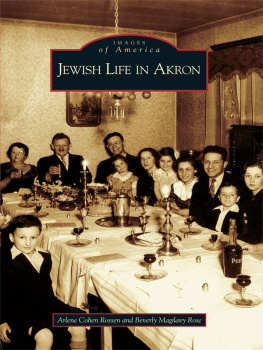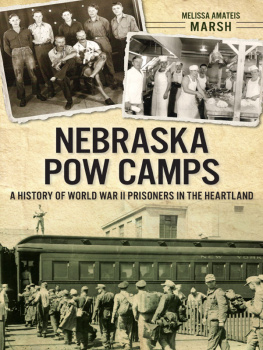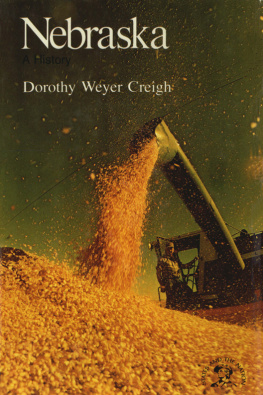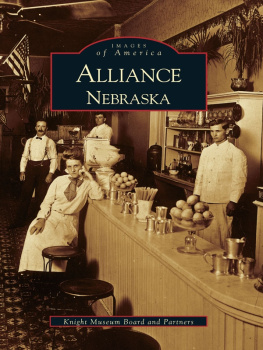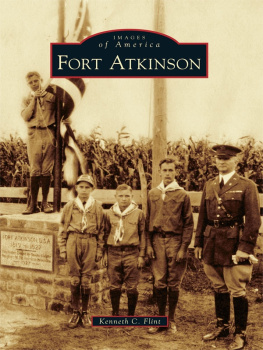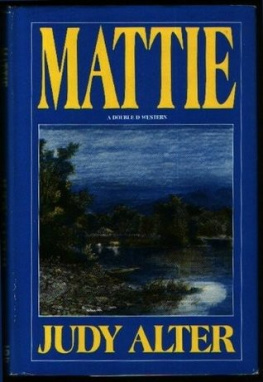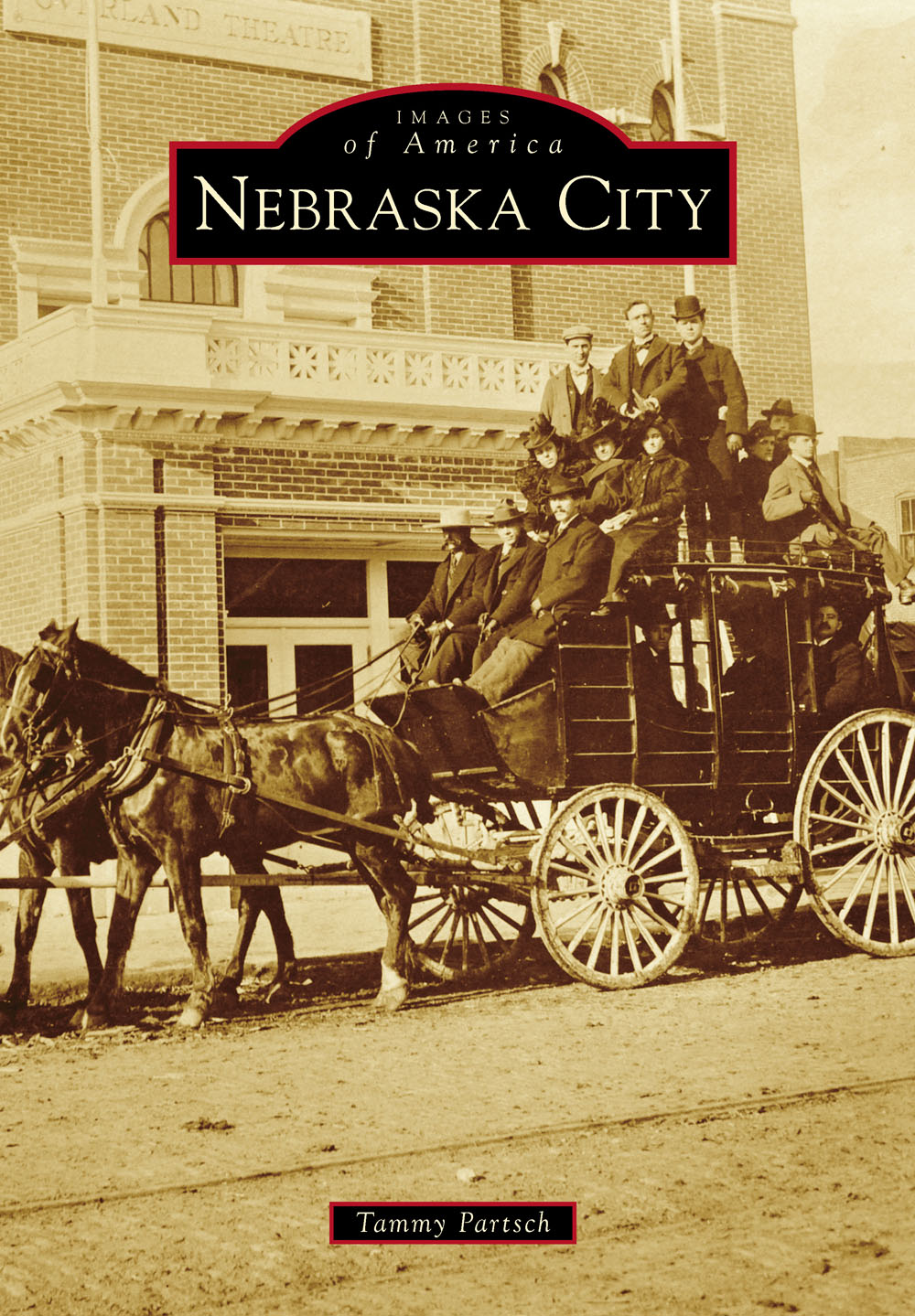
IMAGES
of America
NEBRASKA CITY

While the layout may be familiar, the early state and Native American street names were changed in 1888 to a numbering system. The road now known as Fourth Corso was previously called Ferry Street, as it was the location where ferries to and from Iowa were loaded and unloaded. (Courtesy of the Morton James Public Library.)
ON THE COVER: The Overland Theatre was a downtown attraction for nearly 40 years. The 850-seat venue celebrated its grand opening in December 1897. Pictured here are the cast and crew of the inaugural show, William Gilletts Secret Service. (Courtesy of Arbor Lodge.)
IMAGES
of America
NEBRASKA CITY
Tammy Partsch

Copyright 2015 by Tammy Partsch
ISBN 978-1-4671-1449-3
Ebook ISBN 9781439652220
Published by Arcadia Publishing
Charleston, South Carolina
Library of Congress Control Number: 2015940336
For all general information, please contact Arcadia Publishing:
Telephone 843-853-2070
Fax 843-853-0044
E-mail
For customer service and orders:
Toll-Free 1-888-313-2665
Visit us on the Internet at www.arcadiapublishing.com
With all my heart, this book is dedicated to Dave and Luke
CONTENTS
ACKNOWLEDGMENTS
One of my earliest memories involves spending time exploring the Otoe County Museum of Memories in Syracuse, Nebraska, while my mother volunteered making exhibits, giving tours, and cataloging donated items. The museum had a certain smell to ita mix of antiques and sawdust. Even today, that smell puts me right back in those exhibits, a curious three-year-old at play. My love and respect for history grew from that time.
So many people and organizations helped me gather information for this book. I would like to thank Laura Steinman at Arbor Lodge; Amy Stouffer with the Arbor Day Foundation; Dorris Sackles; Jim Kuhn and the Nebraska City Historical Society; Bonnie Goodman with Main Street Historians; Gail Wurtele and Pat Friedli with the Wildwood Period House; the Morton James Public Library; Tim Pendrell and Amy Allgood at Nebraska City Tourism and Commerce; Bill Hayes with the Mayhew Cabin Museum; Erin Beethe with Kimmel Orchard; the Richard P. Kimmel and Laurine Kimmel Charitable Foundation; Dean Shissler with the Kregel Windmill Factory Museum; Tim Engel with the Grand Army of the Republic Memorial Hall; and Carol Randle and Tom Schreiner with the Nebraska City Museum of Firefighting. All of these people and organizations were so generous with their time and knowledge about all things Nebraska City, and I appreciate their help.
I would also like to thank the teachers and staff at Lourdes Central Catholic Schools for their patience with me as I researched this book while attempting to throw together lesson plans. I am grateful for the support of the administration that allows me to pursue my love of writing while teaching part-time.
My parents, Dean and Keitha Thomson, deserve a special thanks for their years of support. They have never laughed at my dreams, at least not to my face, and I love them both very much.
Finally, my thanks go to my favorite people on the entire planet, Dave and Luke Partsch. Dave, you continually do so much to better our hometown, and I respect and love you immensely. Luke, you bring joy to our home every day. Here it is in print again: I love you more.
INTRODUCTION
Nebraska City in the 21st century is known as a tourist destination, a town saturated with museums, a place to buy apples. From Arbor Lodge and Arbor Day Farm to downtown, from Northside Elementary School to the new CHI Health St. Marys on South Eleventh Street, Nebraska City is a town alive with history that is moving into the future.
In April 1872, the name Nebraska City became firmly planted in history books with the celebration of the first Arbor Day. For nearly 20 years prior to that first celebration of nature, this Missouri River community bustled with never-ending activity that included stagecoaches, freighting, and manufacturing. The rest of the 1800s were not too shabby, either. Opera houses, unique retail stores, parks, and the latest in transportation were topics of conversation throughout the town. As the 20th century dawned, so did industry and orchards. Today, Nebraska City is known as a getaway town, ranked ninth on Smithsonian magazines Top 20 Best Small Towns to Visit in 2014.
However, one can wonder, What if? What if half the town had not been destroyed by fire in 1860? What if the state capitol had been located here instead of Lincoln? What if the Union Pacific Railroad had chosen to build its headquarters in Nebraska City instead of Omaha?
On the other hand, what if J. Sterling Morton had decided not to move to Nebraska City in 1855? What if the Porters and the Kimmels had decided their orchards would not be worth recovering from the Armistice Day freeze of 1940? What if the Arbor Day Foundation had not invested millions in a state-of-the-art conference center and Tree Adventure in Nebraska City? Nebraska City could have gone the route of many small Midwestern towns and disappeared off the map. But, the legendary perseverance of the pioneers who tamed this land can be found in the townspeople living here today. They are the ones who prepare for record crowds every AppleJack weekend, the ones who send their children to our schools, who worship in our churches. For all the wonderful things about Nebraska City, and there are many, it is the people of Nebraska City who make it great.
In 1894, at an Arbor Day celebration at the Department of Agriculture in Washington DC, J. Sterling Morton, the founder of Arbor Day, spoke the following words: So, every man, woman, and child who plants trees shall be able to say, on coming as I have come, toward the evening of life, in all sincerity and truth: If you seek my monument, look around you. Nebraska City can take these words to heart and know that our community has changed the world. It is truly a place where great ideas grow. Plant trees!
One
BLOOMING WITH HISTORY
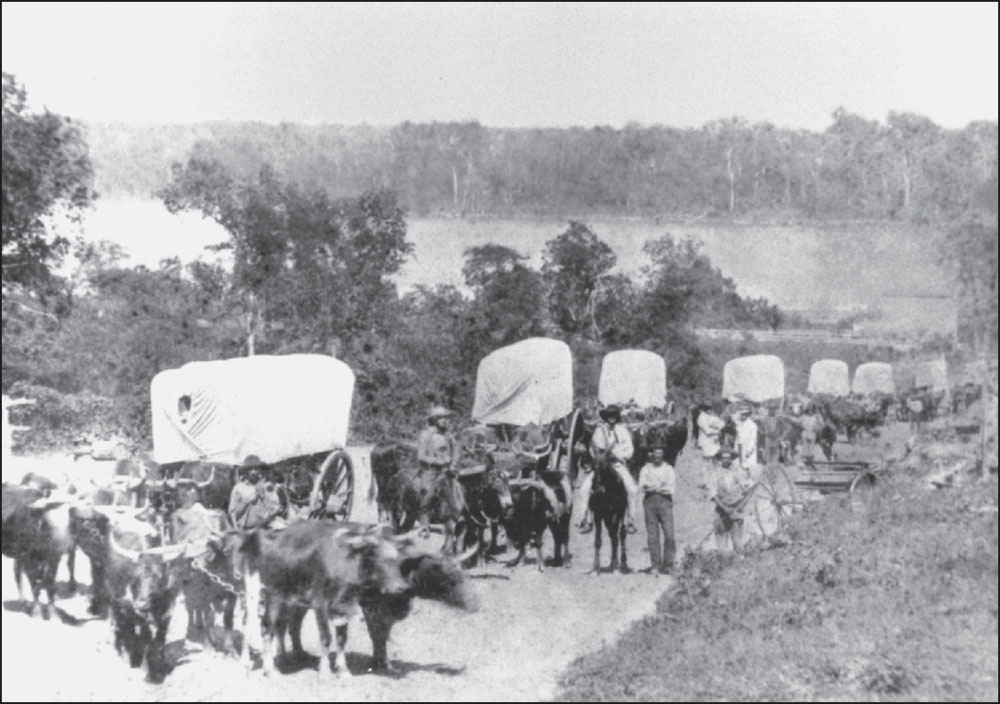
In 1804, Meriwether Lewis, William Clark, and the Corps of Discovery passed what is now Nebraska City on their journey up the Missouri River. Approximately 40 years later, the US Army wanted to build a new fort on the Great Plains, and they chose the same site. By 1859, when this wagon-train image was captured, Nebraska City had been platted and incorporated and was well on its way to becoming an industrial and transportation hub. (Courtesy of the Morton James Public Library.)
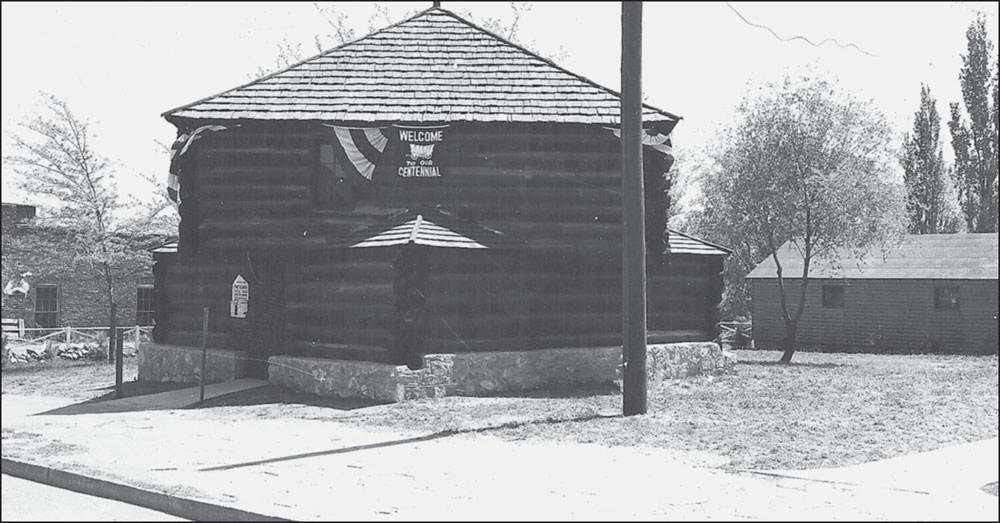
After a visit to the area in 1838, Col. Stephen Kearny recommended this site for a military outpost. Construction of Fort Kearny, as it became known, began in 1846. The buildings, including the blockhouse replicated here, were vacated a mere two years later when the Army decided to move the fort west to what is now Kearney, Nebraska. Platting of the actual city began on July 10, 1854, and Nebraska City was officially incorporated in March 1855. Wagon trains pulled by oxen and mules clogged the towns main thoroughfares. Those trains, called prairie schooners, carried settlers and supplies to California; New Mexico; Denver, Colorado; and Salt Lake City, Utah. From the 1850s through the 1860s, four thousand wagons left Nebraska City each year. (Courtesy of the Mayhew Cabin Museum.)
Next page


